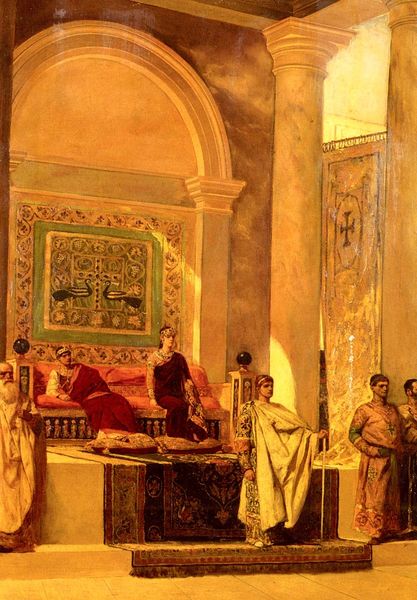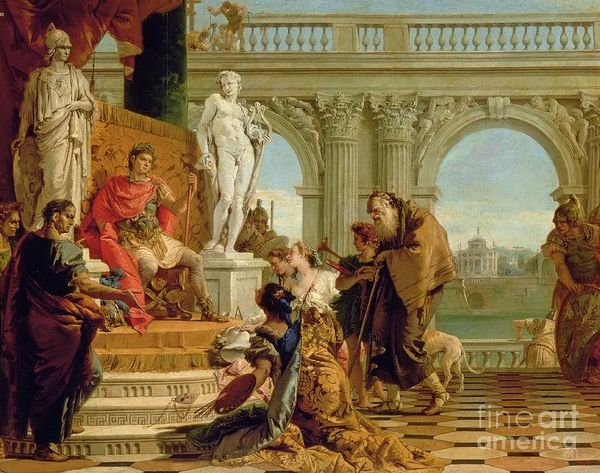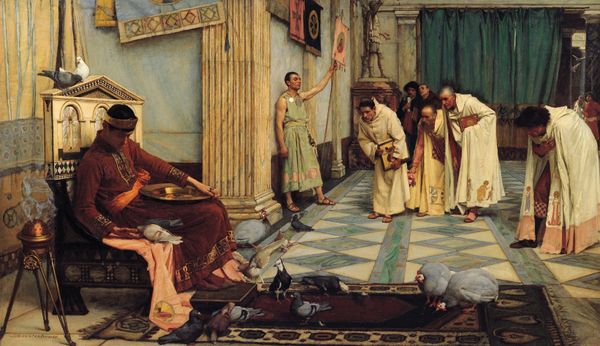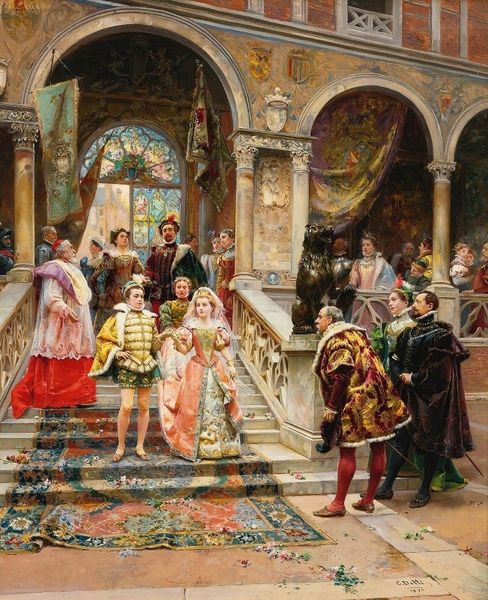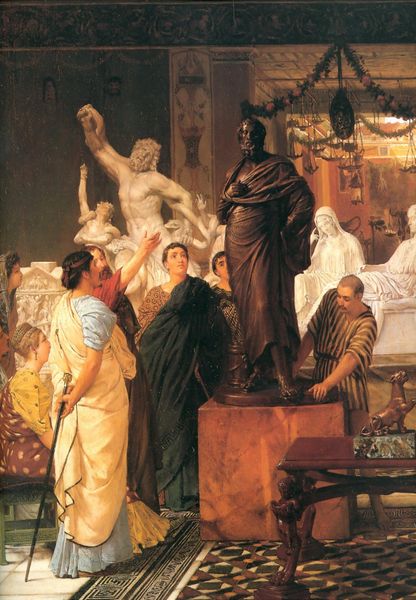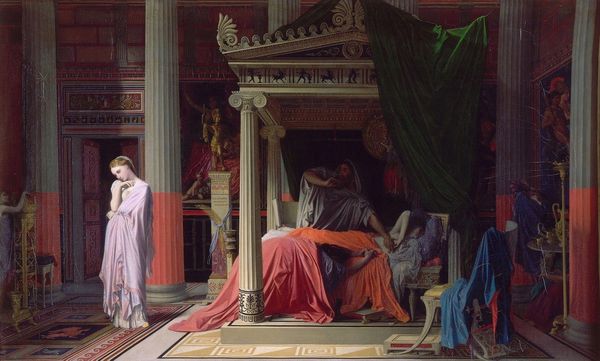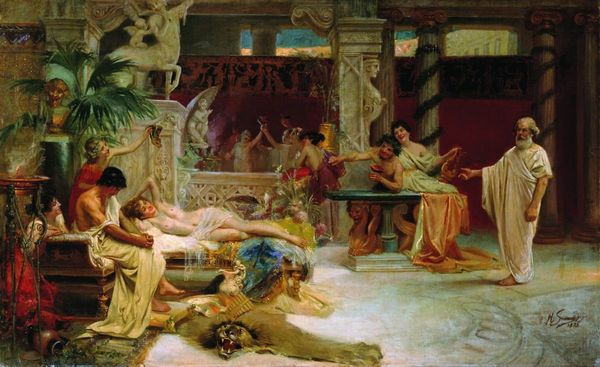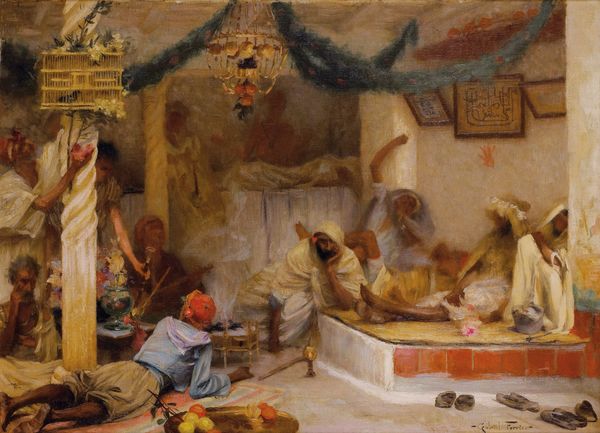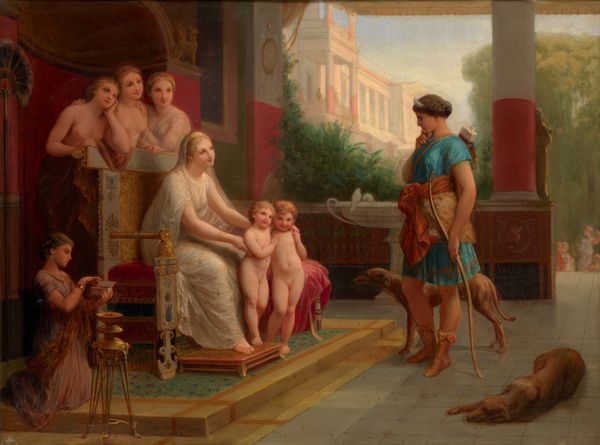
painting, oil-paint
#
portrait
#
neoclacissism
#
painting
#
oil-paint
#
greek-and-roman-art
#
figuration
#
classicism
#
genre-painting
#
history-painting
#
academic-art
Copyright: Public domain
Editor: Gustave Boulanger's oil painting, "The Flute Concert," presents a scene with figures in what looks like a Roman courtyard. The colours are beautiful, but I'm curious about the organisation of space. What do you see in this piece? Curator: Notice how Boulanger constructs this pictorial space. Observe the geometry of the composition: the precise rendering of the architectural elements and the balanced arrangement of the figures create a harmonious effect. Editor: So, it's really about the forms, rather than the people. Curator: Exactly. Think about the formal elements: the placement of the columns creates rhythm, the use of light and shadow models the figures giving them volume, and the contrast of colors creates visual interest. It exemplifies neoclassicism through its symmetry, controlled lines, and idealized forms reminiscent of antiquity. Are the figures realistic in their scale in relation to the columns? Editor: They do seem quite small compared to the pillars and overall space! I see a tension between a naturalistic rendering and an artificial composition. Curator: Precisely! Boulanger isn't attempting pure representation but instead an aesthetic ideal. It's an orchestration of form, line, and colour. And how do these relate? Editor: I think the architectural framing – the lines, columns, rectangular insets, almost overpower the figures. The organization of the painting feels more significant than the scene itself. Thanks for highlighting this tension; I now appreciate how it adds to the work's deeper meaning. Curator: By studying its forms, we realize that Boulanger has meticulously crafted not just an image but a statement of aesthetic ideals.
Comments
No comments
Be the first to comment and join the conversation on the ultimate creative platform.

